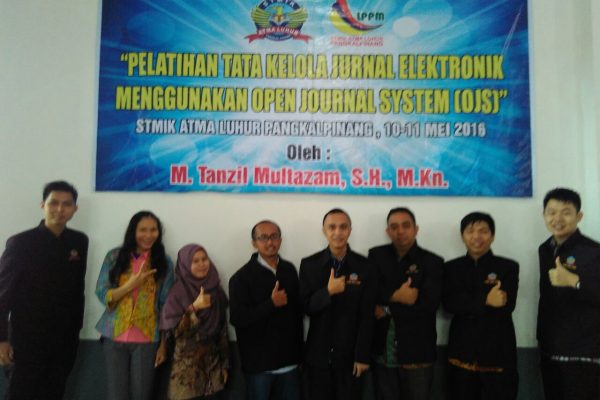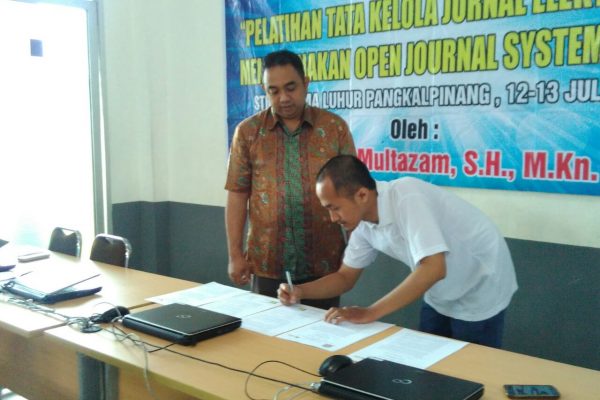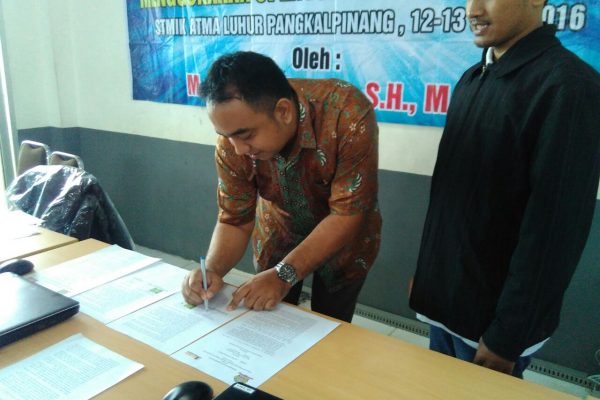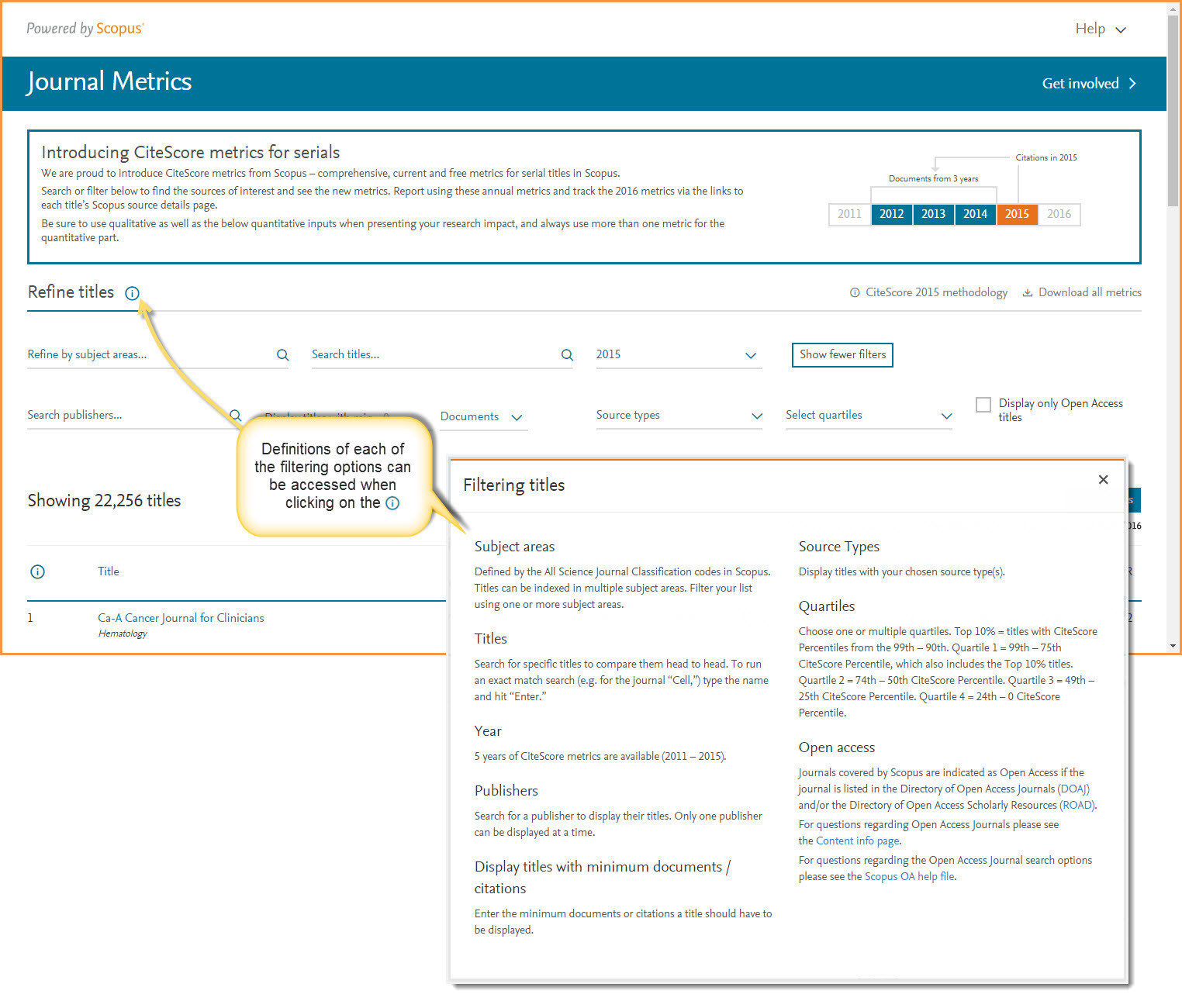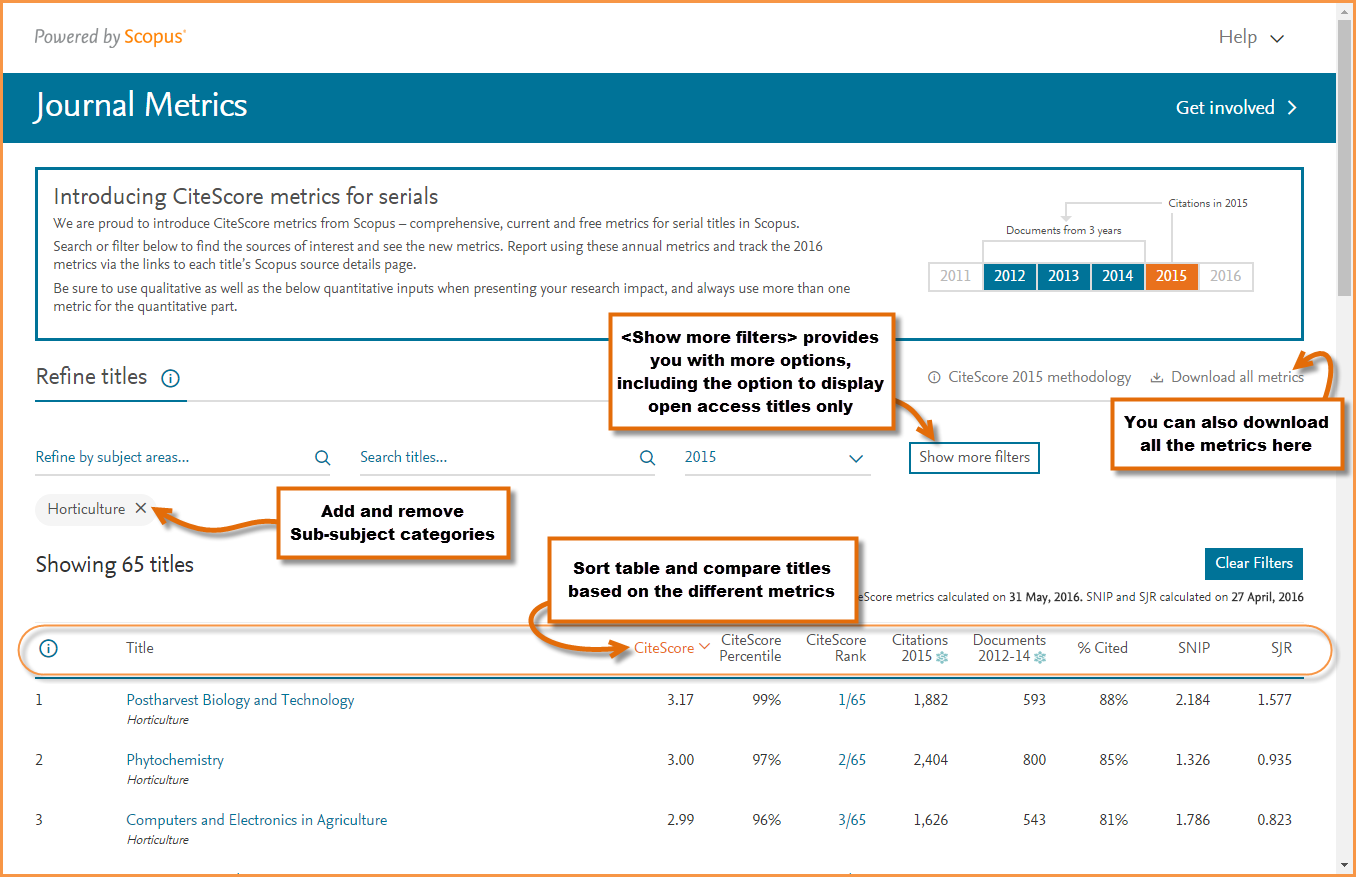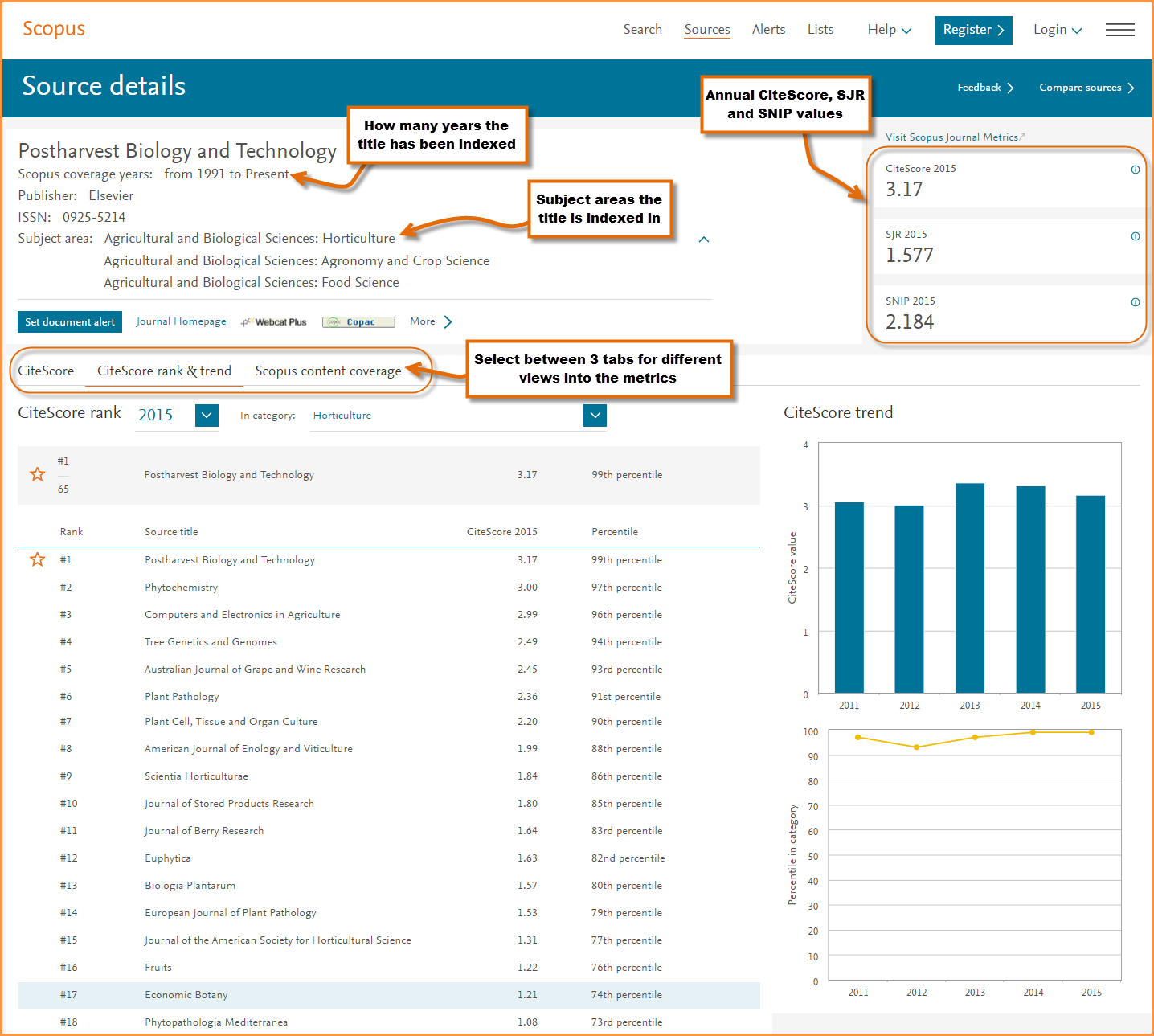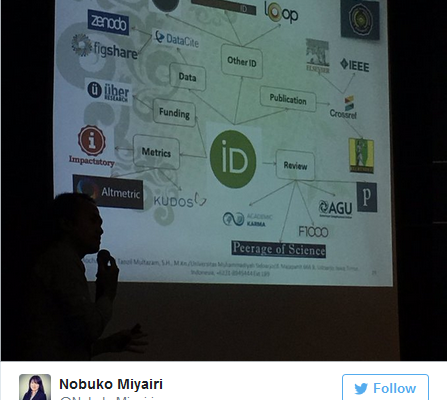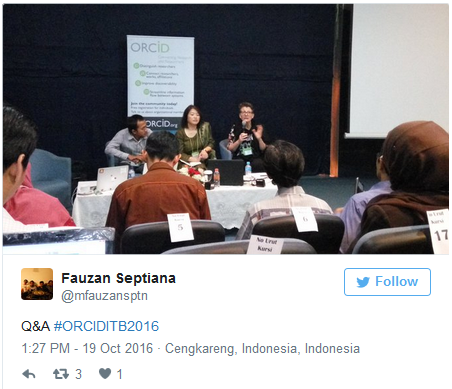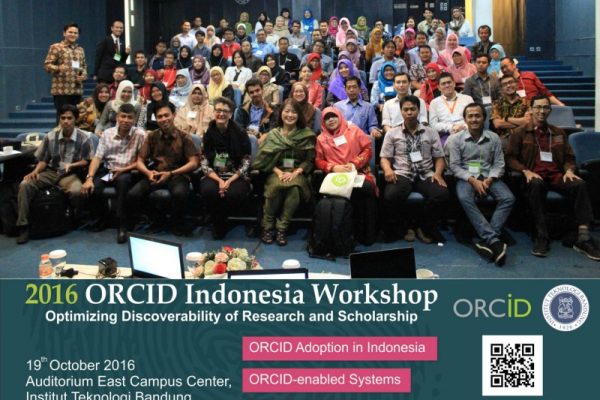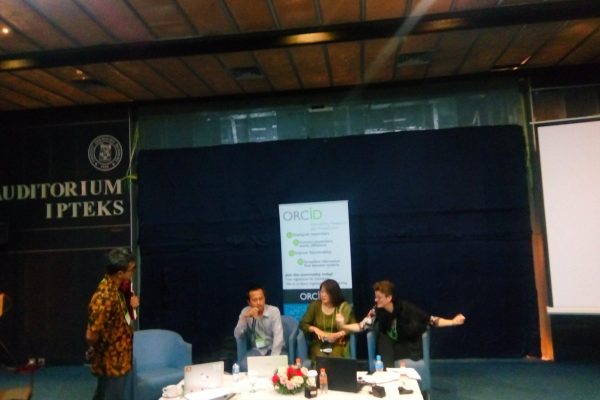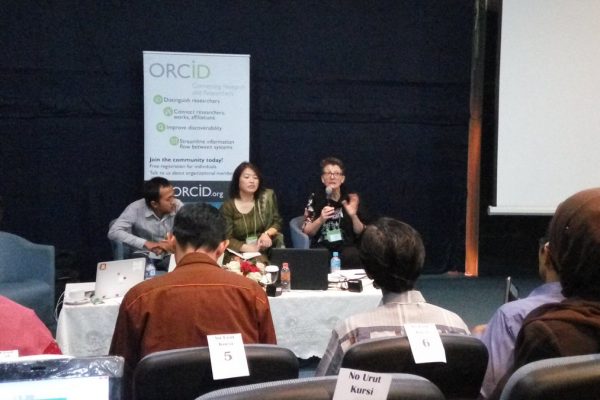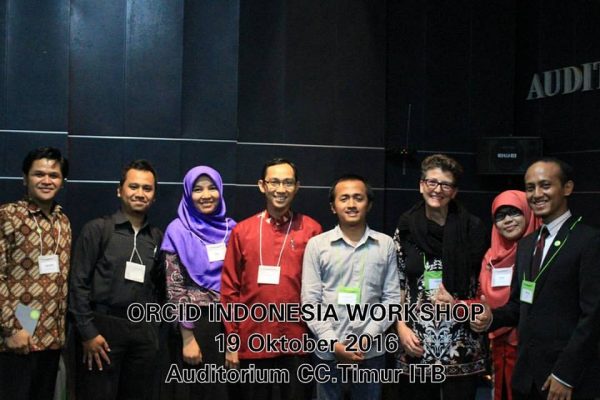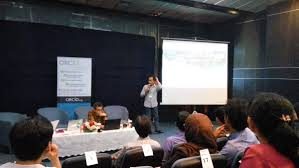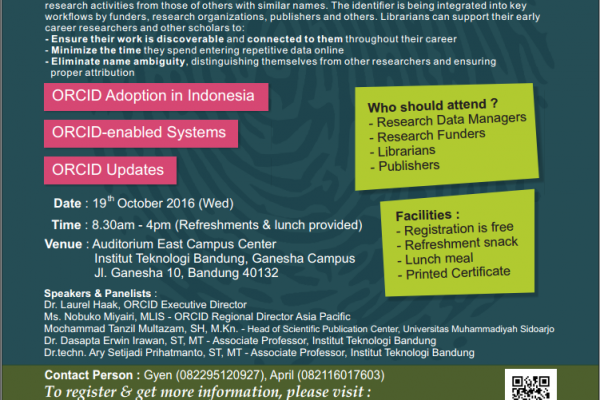Pendampingan OJS di STMIK Atma Luhur Pangkal Pinang
Sebagai perwujudan dalam pengabdian masyarakat dan memberikan pencerahan terkait pengelolaan jurnal ilmiah. Pusat Pengembangan Publikasi Ilmiah (P3I) Universitas Muhammadiyah Sidoarjo secara konstan mengadakan pendampingan OJS (Open Journal System) dan penulisan karya ilmiah. Bekerjasama dengan Relawan Jurnal Indonesia (RJI), P3i pada tanggal 13-14 Februari 2017 melakukan pendampingan terhadap STMIK Atma Luhur Pangkal Pinang sekaligus melakukan penandatangan MoU dan MoA terkait kerjasama pengelolaan jurnal imiah.
Dokumentasi:
Manuscript Editing Service
Ada banyak Perusahaan jasa pengeditan naskah artikel ilmiah yang beredar di dunia maya. Jasa yang diberikan antara lain: translate, proofreading, pembuatan dan/atau perbaikan tabel dan gambar, menyusun artikel sesuai petunjuk penulisan jurnal tujuan, dan jasa menarik lainnya yang membuat penulis lebih bisa berfokus pada substansi artikel. Namun tidak semua perusahaan tersebut menyediakan jasa-jasa tersebut, ada yang hanya menyediakan jasa proofread. Perusahaan jasa pengeditan yang populer di antaranya adalah:
- American Journal Expert (link)
- Edanz English Editing (link)
- Editage (link)
- True Editors (link)
- Elsevier Webshop (link)
- Wiley Editing Service (link)
- Sage Languange Service (link)
- Springer Author Service (link)
- Prosemantic (link)
(list by Mochammad Tanzil Multazam-P3I UMSIDA)
Perkembangan Penilaian Kualitas Publikasi di Indonesia
Di Indonesia telah ditetapkan aturan terkait dengan Akreditasi jurnal yakni adalah Peraturan Direktur Jenderal Dikti
Nomor 1 Tahun 2014 tentang Pedoman Akreditasi Terbitan Berkala Ilmiah. Pada peraturan tersebut dipersilahkan bagi jurnal-jurnal di Indonesia yang sudah memenuhi kriteria untuk mendaftarkan dirinya di suatu portal khusus bernama ARJUNA (akronim dari Akreditasi Jurnal Nasional). Kriteria dasar untuk pengajuan tersebut adalah :
a. Memiliki ISSN baik dalam versi elektronik (e-ISSN) dan atau cetak (p-ISSN) bila terbitan terbit dalam dua versi.
b. Mencantumkan persyaratan etika publikasi (publication ethics statement) dalam laman website jurnal.
c. Terbitan berkala ilmiah harus bersifat ilmiah, artinya memuat artikel yang secara nyata mengandung data dan informasi yang memajukan pengetahuan, ilmu, dan teknologi serta seni.
d. Terbitan berkala ilmiah telah terbit paling sedikit 2 tahun berurutan, terhitung mundur mulai tanggal atau bulan pengajuan akreditasi.
e. Frekuensi penerbitan berkala ilmiah paling sedikit 2 kali dalam satu tahun secara teratur.
f. Jumlah artikel setiap terbit sekurang-kurangnya 5 artikel, kecuali jika berbentuk monograf.
g. Tercantum dalam salah satu lembaga pengindeks nasional (Indonesian Scientific Journal Database (ISJD), Portal Garuda, Pustaka Iptek dan/atau yang setara).
h. Memiliki nomor unik artikel yang sifatnya permanen (persistent identifier) yang dinamakan Digital Object Identifier (DOI).
Dalam perkembangannnya, guna memacu naikknya angka jurnal terakreditasi di Indonesia. Kemenristekdikti mengeluarkan kebijakan pemberian insentif bagi jurnal ilmiah yang dinamakan sebagai BTBI (Bantuan Terbitan Berkala Ilmiah). Naiknya angka jurnal terakreditasi di Indonesia itu penting mengingat dalam Permenristekditi Nomor 20 Tahun 2017, Jurnal Terakreditasi berbahasa PBB serta terindeks DOAJ (Directory Open Access Journal) dengan green tick (centang hijau) disetarakan dengan jurnal internasional.
Adanya peraturan-peraturan yang mencoba mensetarakan jurnal nasional terakreditasi dengan jurnal internasional ini merupakan upaya Kemenristekdikti untuk mencoba mandiri dalam menentukan kualitas suatu jurnal dan tidak lagi Scopus-oriented. Hal inilah kemudian yang melahirkan suatu portal baru yang bernama SINTA (Science and Technology Index) yang nantinya diharapkan sebagai cikal bakal ukuran dampak ilmiah publikasi akademisi Indonesia. Dengan menggabungkan poin sitasi peneliti/akademisi/institusi di google scholar, scopus, dan Inasti diharapkan dapat mengahasilkan suatu angka akurat mengukur dampak ilmiah tersebut yang bernama Sinta Score.
Sinta dalam perkembangannya juga diwacanakan untuk mengukur kualitas jurnal di Indonesia baik yang sudah dan belum terakreditasi berbasis nilai Evaluasi Diri mereka di ARJUNA. Hal ini bisa dibaca dari Juknis Permenristekdikti Nomor 20 Tahun 2017 yang menyebutkan adanya pengkategorian Jurnal di Indonesia mulai Q1-Q6. Sinta yang juga terkoneksi dengan Pangkalan Data Pendidikan Tinggi (PDDIKTI) dan Simlitabmas di Indonesia tentunya juga akan menjadi pusat pengolahan data andalan Kemenristekdikti untuk menentukan kualitas publikasi dan penelitian peneliti/akademisi/institusi di Indonesia.
Link Terkait:
(by Mochammad Tanzil Multazam, P3I-UMSIDA)
Journal Ranking
Berdasarkan ketentuan-ketentuan Kemeristekdikti dalam Permenristekdikti Nomor 20 Tahun 2017 dan Pedoman PAK Dosen Tahun 2014 disebutkan bahwa untuk menentukan status jurnal tersebut merupakan jurnal internasional syaratnya adalah:
- Memiliki ISSN online;
- Editorial board dari 4 Negara berbeda;
- Author dari 2 Negara berbeda (dalam satu terbitan);
- Artikel ditulis dengan menggunakan bahasa resmi PBB (Arab, Inggris, Perancis, Rusia, Spanyol atau Tiongkok);
- Pelayanan Indeks ke Scopus (dan berstatus Q4 di Scimagojr.com) atau Web of Science (ClarivateAnalytics dengan nilai Impact Factor 0) atau Index Copernicus atau Microsoft Academic Search atau setara;
- Laman elektronik jurnal mudah ditelusuri secara online, dengan indikator artikelnya dapat ditemukan di google scholar secara otomatis.
Berdasarkan ketentuan-ketentuan Kemeristekdikti dalam Permenristekdikti Nomor 20 Tahun 2017 dan Pedoman PAK Dosen Tahun 2014 disebutkan bahwa untuk menentukan status jurnal tersebut merupakan jurnal internasional bereputasi syaratnya adalah:
- Jurnal yang memiliki kriteria sama dengan Jurnal Ilmiah Internasional pada angka 7;
- Memiliki faktor dampak (Impact Factor) dari Web of Science/Thomson berdasarkan Journal Citation Report (JCR); atau berstatus minimal Q3 di Scimago Journal Rank (SJR) dari Scimago Lab (Supported by. Scopus).
Ada beberapa cara untuk mengecek suatu jurnal tercata di Scopus atau tidak:
- login ke scopus langsung (berbayar);
- masuk ke Scopus Journal Metrics (SJM) (gratis);
- masuk ke Scimago Journal Ranking (SJR) (gratis).
Namun jika kita melakukan cek ke SJM atau SJR maka data tersebut tidak langsung real time dan update. Karena data yang masuk ke dua platform tersebut memiliki jeda 1-2 tahun dengan data real yang ada di Scopus, karena terkait dengan proses penghitungan ranking yang berdasar angka 1-2 tahun terakhir.
Link Terkait:
- Scopus (link) (Bagi Dosen UMSIDA, User dan Password bisa diminta di P3I)
- Scopus Journal Metrics (link)
- Scimago Journal Rank (link)
- Index Copernicus (link)
- Microsoft Academic Search (link)
- Web of Science (link)
(by. Mochammad Tanzil Multazam, P3I-UMSIDA)
10 tips for writing a truly terrible journal article
In this fun but informative post, Editor Bert Blocken highlights some of the major mistakes early career researchers make when preparing and submitting a manuscript to a scientific journal

Feature image: The Scream, by Edvard Munch
At a time when publication pressure and the quantity of publications are increasing, but the average quality of publications seems to be decreasing, guidance for early career researchers on how to write journal articles is increasingly relevant. Several best practice guidelines and rules have been published before. This article takes a different approach, by highlighting 10 things you should certainly NOT do. I’ve based them on my experiences in the exact sciences/engineering fields, but some of them may well hold true, whatever your discipline.
Publish or perish? If you screw up, it might be publish and perish. Poor articles, even a single one, can ruin a scientist’s career. As the old saying goes, “you only get one chance to make a first impression”.
If you submit a truly terrible article, it might be rejected by the editors or reviewers, in which case the damage will be significant but limited in space (although not necessarily in time). The worst thing that can happen, however, is that your poor article slips through the review process. In that case, when the article is published, it will be digitally archived and will remain visible for the whole world to see for as long as electronic records exist. If that doesn’t deter you and you are still focused on publishing a bad manuscript, just follow one or more of the tips below.
- Refuse to read the previous literature published in your field
- Take the lazy route and plagiarize
- Omit key article components
- Disrespect previous publications
- Overestimate your contribution
- Excel in ambiguity and inconsistency
- Apply incorrect referencing of statements
- Prefer subjective over objective statements
- Give little care to grammar, spelling, figures and tables
- Ignore editor and reviewer comments
1. Refuse to read the previous literature published in your field
Literature study is the essential starting point of any worthy research activity, and should form the solid basis of every publication. Nevertheless, many early career researchers skip that stage and end up repeating earlier work, without realizing it has been done before. Unless the previous studies were incomplete – which they will not know because they did not study them – this constitutes the perfect waste of time and resources. Publication pressure is not a valid excuse for an incomplete literature review. Before considering their own research project, authors should first collect sources, read, study and reflect on them. When they have conducted their own project, they should write it down – carefully framed in context – and only then, after all of this, should they submit it for possible publication. This is a process taking months, often years. Some argue that it is impossible to read everything that has been published. Not if you narrow it down to your specific field of study and not if you discriminate based on reading of titles and abstracts only. That is why abstracts are written – to help save you time.
2. Take the lazy route and plagiarize
As publication pressure builds and the deadline for your journal article is drawing near, why not take the easy road? It does involve ignoring tip one as you’ll have to actually read some articles, but the advantage is you might find something you like. And if you really like it, why not copy it? Simply copy and paste one or a group of sentences without adding the proper quotation marks and citations to the original work. Or maybe copy the results themselves, or, why not the entire article? Probably nobody will notice with tens of thousands of articles published every year, right? Think again. Everyone doing decent literature review, which will be the vast majority of researchers in your field, will know as soon as your article is published. Plagiarism is a serious breach of publishing ethics and in some cases may also be copyright infringement. Most academic publishers have installed very elaborate procedures to detect plagiarism, such as Crossref Similarity Check, and there can be stringent repercussions. Elsevier, for example, will keep the plagiarized article online, but stamp on every page “Retracted” in big red letters, including an official plagiarism message. Plagiarism, no matter how small, and no matter how old the documents being plagiarized, is a very effective route to academic self-destruction.
3. Omit key article components
Why should this article be published? What new knowledge does it bring to the academic community? Is the methodology solid? Are the results reliable? Are the conclusions justified? These are questions that editors and reviewers need your article to answer in a specific and logical order:
- Summary of the state of the art
- Identification of knowledge gap
- Specification of novelty/objectives/scope of the present research work
- Applied research methodology
- Obtained results
- Conclusions
If you want to create a poor article, just omit any of these. In particular, leave out a detailed description of research methodology so that no-one else can reproduce your work. Even better, if you want to give readers a major headache, try presenting some or all of these key components in a different order. There are very good reasons why research articles have followed the sequence outlined above for decades, so you might want to conform to this approach.
4. Disrespect previous publications
Respect is of the utmost importance in scientific research and academic publishing. It is highly unlikely that you are the first on planet Earth to work even in the tiny subfield that you proudly call your area of expertise. Generally, much research work has been done before, carefully reported in high-quality journal articles, conference articles and reports. You can disrespect this work in different ways: perform a too limited literature review where you ignore part or all of previous publications, attribute previous work to the wrong authors, provide dismissive statements on others’ publications, etc. You can also show disrespect by overestimating the importance or novelty of your own contribution (see next tip). It is worth remembering though that the most likely reviewers for your article are precisely the authors of previous publications on the same or similar topic. Disrespecting or even offending them might not increase their appreciation of your writing. Incomplete reference lists are also counter-productive. Some authors think that citing the work of others detracts from the novelty of their own contribution. The opposite is true. Correct referencing is proof that the author is aware of relevant previous work and is actually capable of defining a truly novel contribution.
5. Overestimate your contribution
Good ingredients for a truly terrible article are dismissive statements about previous work done by others, incorrect and unjustified self-congratulations, lack of critical self-reflection – in short: lack of modesty. Your own work is much better, more thorough and your conclusions more widely applicable than previous work by others, right? Think again. Generally, it is much easier to identify deficiencies in others’ work than in your own. This does not mean that your work is better; it just means that you need to critically self-reflect on the deficiencies of your own work, and correctly report these in the article. It also means that you need co-authors and/or reviewers to point out the deficiencies that you didn’t spot. And you should be grateful for that. After all, your publication, no matter the research area or topic, is at best a very small link in the long chain of incremental knowledge advancement in a tiny subfield of science.
6. Excel in ambiguity and inconsistency
Try to make the interested reader clueless about what you are communicating by introducing ambiguity in your sentences and words. A good example in computational fluid dynamics research is the use of the word model. If you do not clearly define it prior to its use, it will utterly confuse readers because it can mean almost anything. Another effective approach is inconsistency in terminology – use different terms for the same thing, for example, building, construction, obstacle and bluff body for one and the same study object. Yes, in high school you were probably taught to avoid repeating the same words, and to use comparisons and metaphors, etc. Forget that. A scientific article is not a novel. Reader interpretation is not welcomed and means the writer has failed. Readers cannot read your mind; they can only read your article.
7. Apply incorrect referencing of statements
Unless explicitly stated otherwise (e.g. in stating a research hypothesis), every statement in a scientific article should be immediately backed up by a suitable reference (to previous work by others or yourself) or by evidence reported in your article. Example: “It was shown that the deviation between this type of numerical simulation and corresponding measurements was consistently below 10% (Authors 2016)”. Without adding a reference at the end of this sentence, you suggest that this statement results from your research reported in the same article. If this is not the case, you need to add the reference. Adding references where not needed and – even worse – not adding references where needed is bound to lead to confusion and misinterpretation of your statements.
8. Prefer subjective over objective statements
Statements in a scientific article are intended to communicate knowledge and information. Good communication demands unambiguity, consistency (tip six) and objectivity. However, you might prefer subjective statements expressing personal biases, emotional involvement etc. If you personally find that the 20% deviation between results from your new experiment and those of a previous experiment is satisfactory, you can transfer that happy feeling to your readers, by replacing “the deviation is 20%” with “a very good agreement was obtained”. Irrespective of the adjective, providing this type of subjective statement is not only imprecise and inappropriate but also creates a straight path to disagreement with reviewers and readers.
9. Give little care to grammar, spelling, figures and tables
So, the research is complete and now you need to write it down and create figures. You’ve already put in so much hard work, why spend time focusing on the correct use of grammar and spelling? Reviewers or typesetters will correct that, right? Careful figure legends, axis indications, units… the text makes clear what they are, doesn’t it? No, not really. First, dumping a sloppy article in the inbox of an editor and reviewers is a strong expression of disrespect, especially for the voluntary work carried out by reviewers. Their time is also precious, and they are not your spell checkers. Second, it is generally assumed that an author who doesn’t care about grammar, spelling and the like, is also not precise in his/her research work. The fastest way to lose the confidence of the editor, reviewers and readers in your work is to follow this tip.
10. Ignore editor and reviewer comments
Finally, with or without the above-mentioned tips, you might reach the stage where the editor and reviewers decide your article has potential and you receive feedback from them. Sometimes, these comments are explicitly labelled as mandatory. However, what you do with them is up to you. While there is nothing wrong with a solid rebuttal, you can also try to provoke the editor and/or reviewers by disrespectfully dismissing valid and important comments. Less disrespectful, but equally detrimental to the quality of your article, is to provide an extensive response to the comments in the letter to the editor and the reply to reviewers, but not include elements of this response in the text. The editor and reviewers represent your future readers and they’ve raised these points for a reason. You would be wise to listen to them.
(source: https://www.elsevier.com/authors-update/story/publishing-tips/10-tips-for-writing-a-truly-terrible-journal-article)
How to explore, compare and track journal citation impact with CiteScore metrics
Submitted by Susannah Beatty…
Additionally, follow these tips to get started exploring CiteScore metrics.
Tip 1: Decide where to begin
There are two main places to access CiteScore metrics, both are freely available to anyone. They are:
- The Sources page on Scopus.com itself: https://www.scopus.com/sources, and
- Journalmetrics.scopus.com
But, which one you begin with depends upon what you want to do.
- If you want to delve into the details and interrogate metrics for a singular title, start on Scopus itself: https://www.scopus.com/sources. Here you can search for a particular title and then access the metrics and underlying data.
- Journalmetrics.scopus.com includes search and filter features allowing you to explore the full range of associated CiteScore metrics for a group of journals at one time. For example, here you can compare CiteScore metrics, along with SNIP and SJR values, for all journals in a specific subject category. You can also download all the metrics as one spreadsheet.
Tip 2: Compare a group of titles
Let’s say you are looking for quantitative information on titles in a particular Subject area. To do this, start on journalmetrics.scopus.com and go to <Refine titles> (see Figure 1). In this example, we will refine by subject area, but you can also choose different ways to filter by clicking on <Show more filters> and even build your own list to compare by searching for and adding specific titles.
Click image to expand and see an example of the filtering options on journalmetrics.scopus.com
Each title is indexed in at least one Scopus ASJC category. There are over 300 sub-subject areas in Scopus, which aggregate up to 27 subject level categories. As an example, if I wanted to look at titles in the sub-subject category Horticulture, I would find and select it from under the subject area Agricultural and Biological Sciences.
In this view, you can see and compare all the titles — including journals, books series, conference proceedings and trade journals — indexed under Horticulture. 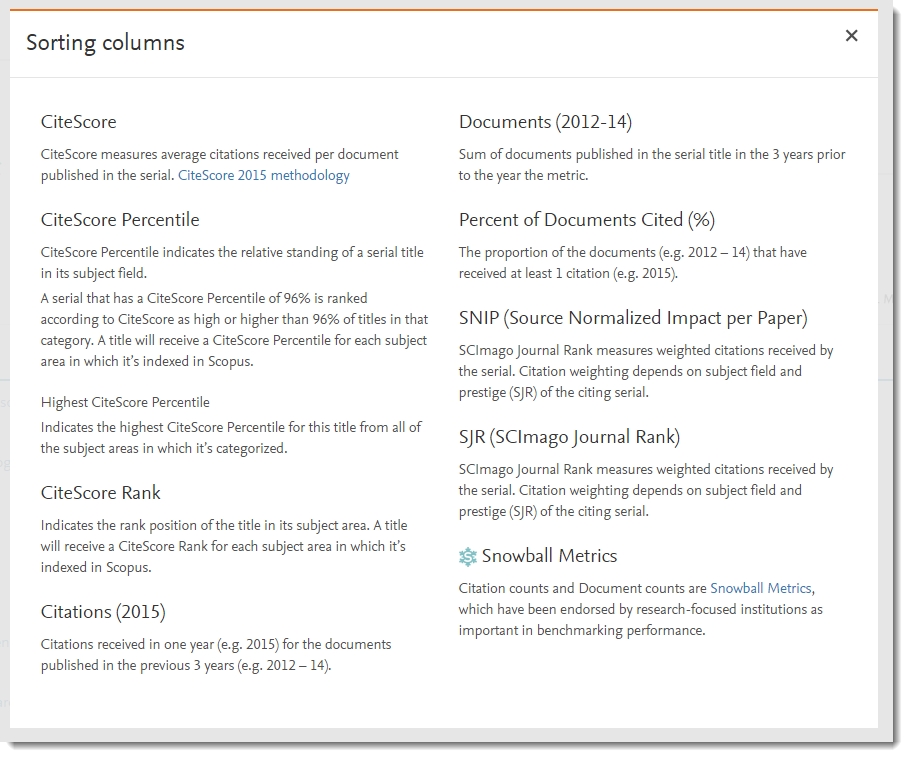 The metrics displayed are (to read the definitions of each, click on the figure to the right):
The metrics displayed are (to read the definitions of each, click on the figure to the right):
- CiteScore
- CiteScore Percentile
- CiteScore Rank
- # of Citations (Year)
- # of Documents (Previous 3 year period)
- % Cited
- SNIP (Source Normalized Impact per Paper)
- SJR (SCImago Journal Rank)
Note: You can also sort by the various metric categories. For example, rather than looking at the list ordered by highest CiteScore Rank, you could click on % Cited to discover which titles have the largest proportion of documents that have received at least 1 citation (See figure below).
Again, under the <Show more filters> button, you can refine and change your view to gain different insights such as looking at rankings for past years, or limiting by Source type, particular quartiles, publishers, and more. There is also a box to <Display only Open Access titles>.
Click image to expand and see an example of the journalmetrics.scopus.com interface
Tip 3: Get more detailed information by clicking on the title
Once you’ve identified a particular title (or titles) that interests you, click on the title name to link into the details page on Scopus.
Here, you can learn much more about a title. Some key information to look for include:
- Scopus coverage years: tells you how many years a title has been indexed in Scopus, so you know how far back coverage extends and what is being used to calculate CiteScore.
- Subject areas: check which other subject areas the title falls under
- Multiple 2015 journal metrics (when available): see a titles 2015 CiteScore, SJR and SNIP values
- CiteScore tab: view the CiteScore calculation and CiteScore Tracker (see Tip 4 below)
- CiteScore Rank & Trend tab: view how a title ranks in different subject areas and graphically see CiteScore and CiteScore subject area percentile trends. This tab can be helpful in determining if a CiteScore value is good when compared to other titles in the same subject area.
- Scopus content coverage: provides the total number of documents published for a title for each year it has been indexed in Scopus.
Click image to expand and view an example of the Scopus Source details page
Tip 4: Get a preview into CiteScore 2016
CiteScore Tracker provides a preview of what CiteScore 2016 is looking like so far. It is based on current data in the Scopus database. It allows you to see how many documents we have currently indexed in the previous 3 years, and how many citations those documents have received currently in 2016. The number will continue to build over the year as more documents are indexed and cited. The data in the Tracker is updated monthly all the way up until the official 2016 CiteScore value is calculated. Subscribers can also click into the CiteScore Tracker numbers to see what documents are indexed.
Click image to expand and see an example of CiteScore Tracker
More resources:
Read more about research metrics available on Scopus
Download the CiteScore Factsheet
(https://blog.scopus.com/posts/how-to-explore-compare-and-track-journal-citation-impact-with-citescore-metrics)
ORCID ITB Workshop
Pada tanggal 19 Oktober 2016, atas undangan ORCID dan LPPM ITB, Kepala P3I-Umsida, Bapak Mochammad Tanzil Multazam, M.Kn., memberikan pencerahan kepada para akademisi dan pengelola jurnal di Indonesia terkait penggunaan dan manfaat ORCID iD dalam alur publikasi ilmiah. Acara juga dihadiri oleh ORCID Executive Director Dr. Laurel Haak dan ORCID Regional Director Asia Pasific Ms. Nobuko Miyairi, MLIS. selaku pembicara utama.
Materi:
Introduction and welcome. Laurel Haak, ORCID Executive Director.
ORCID overview: why your lifelong identifier is important in the digital age. Nobuko Miyairi, ORCID Regional Director, Asia Pacific
ORCID in publishing workflow. Mochammad Tanzil Multazam, Head of Scientific Publication Center / Editor in Chief, Rechtsidee. Universitas Muhammadiyah Sidoarjo.
ORCID as a community initiative. Nobuko Miyairi, ORCID Regional Director, Asia Pacific
Dokumentasi:
